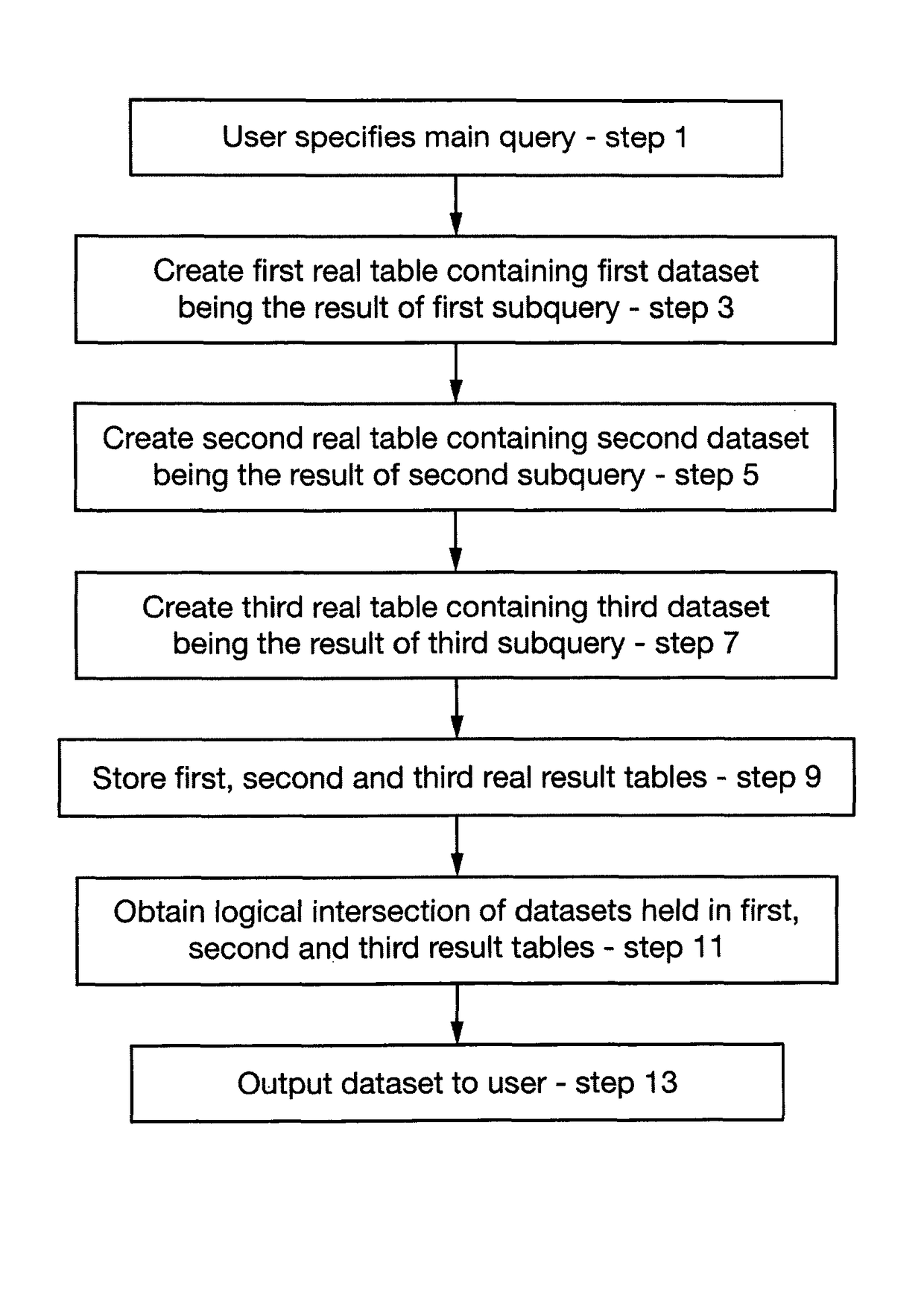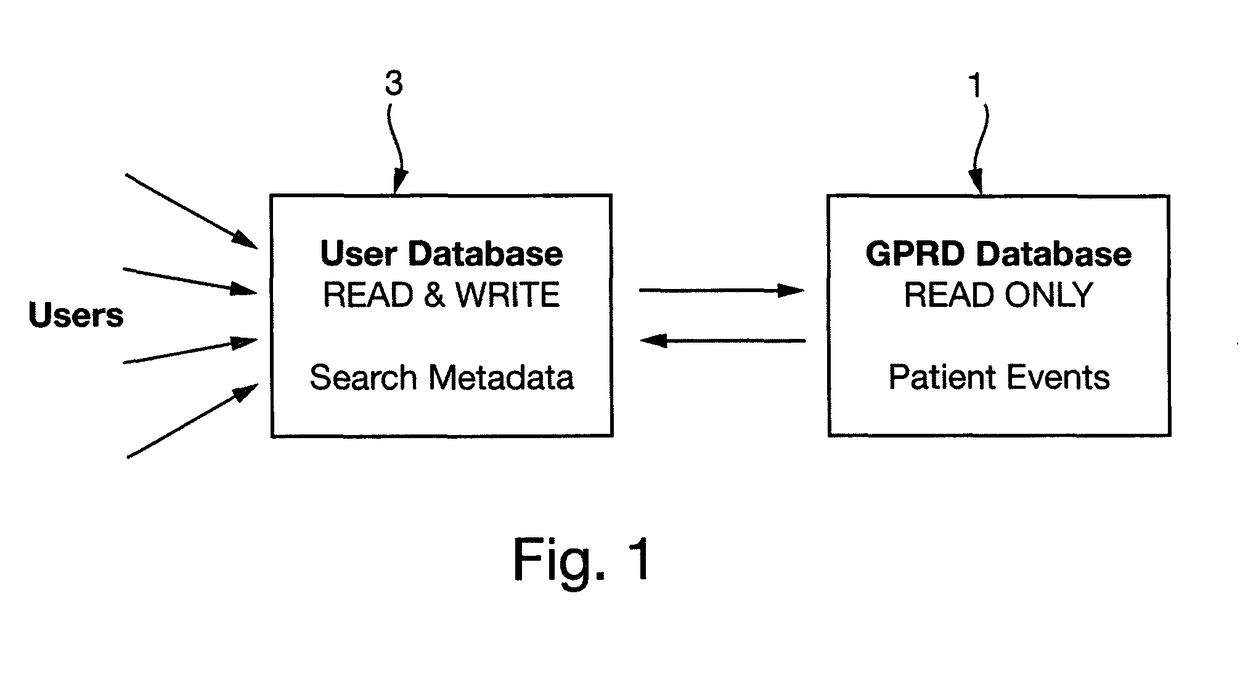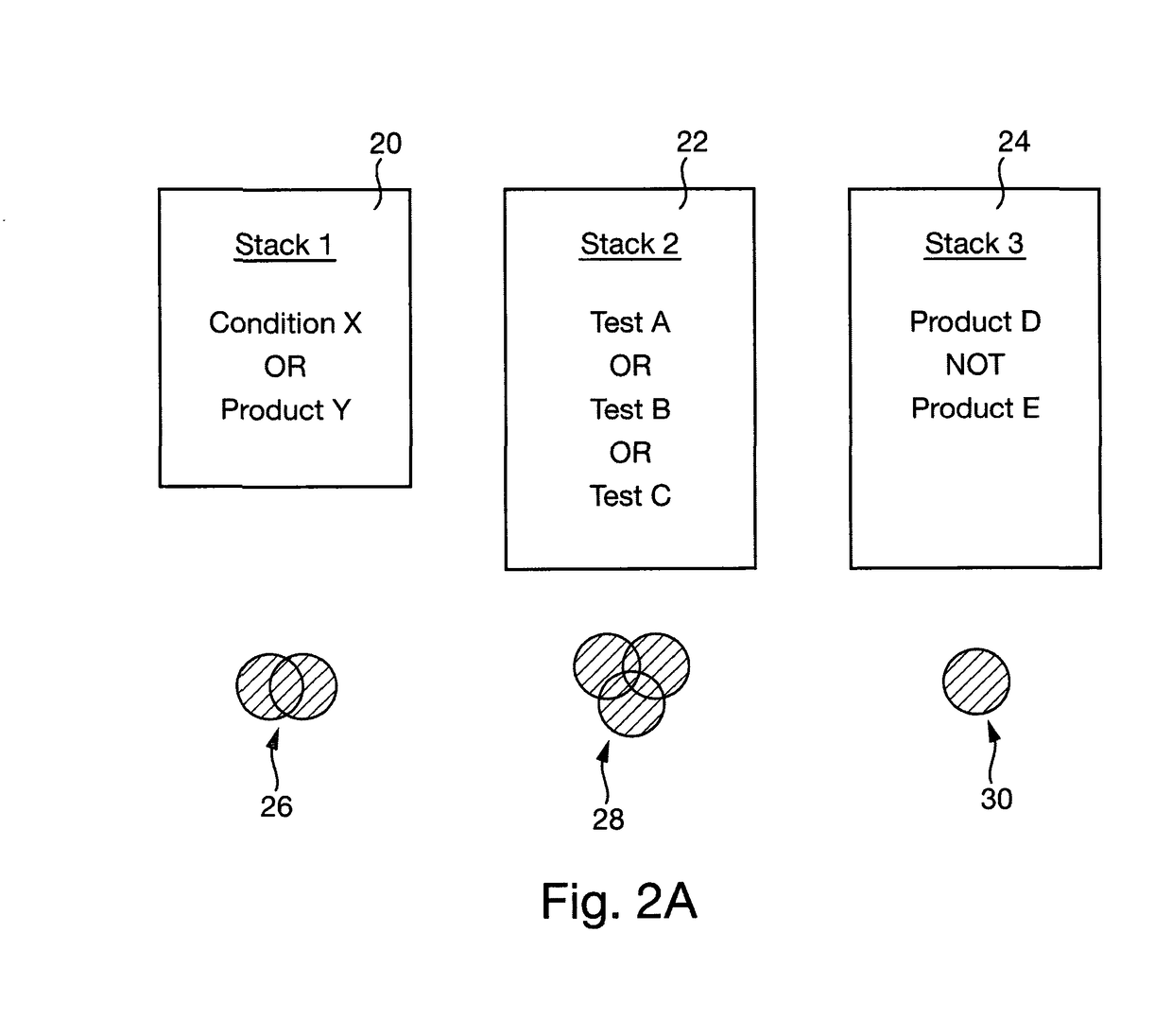Methods of querying a relational database
a relational database and database technology, applied in the field of computer implemented methods, can solve the problems of significant unpredictability as to the speed with which the query is answered, or indeed, whether the answer is provided at all, and achieve the effect of improving the ease of use, fast access, and reducing the demands on the data storage media
- Summary
- Abstract
- Description
- Claims
- Application Information
AI Technical Summary
Benefits of technology
Problems solved by technology
Method used
Image
Examples
Embodiment Construction
[0105]Some preferred embodiments of the method of the present invention will now be described by reference to a relational database which is used to hold patient medical records. It will be appreciated that the techniques of the present invention are not limited to this context, and may be used in relation to relational databases storing data of any subject matter. The invention will also be described by reference to the use of the Structured Programming Language (SQL), although it is envisaged that other suitable query languages may alternatively be used. Suitable alternative commands may then be used.
[0106]As shown in FIG. 1, a relational database (the “main” database) 1 in the form of a patient medical record database is provided. This database is in communication with a separate user database 3. The user database stores metadata relating to user queries e.g. searches, including real result tables obtained during searches, search parameters etc. The user database is a Read and Wr...
PUM
 Login to View More
Login to View More Abstract
Description
Claims
Application Information
 Login to View More
Login to View More - R&D
- Intellectual Property
- Life Sciences
- Materials
- Tech Scout
- Unparalleled Data Quality
- Higher Quality Content
- 60% Fewer Hallucinations
Browse by: Latest US Patents, China's latest patents, Technical Efficacy Thesaurus, Application Domain, Technology Topic, Popular Technical Reports.
© 2025 PatSnap. All rights reserved.Legal|Privacy policy|Modern Slavery Act Transparency Statement|Sitemap|About US| Contact US: help@patsnap.com



